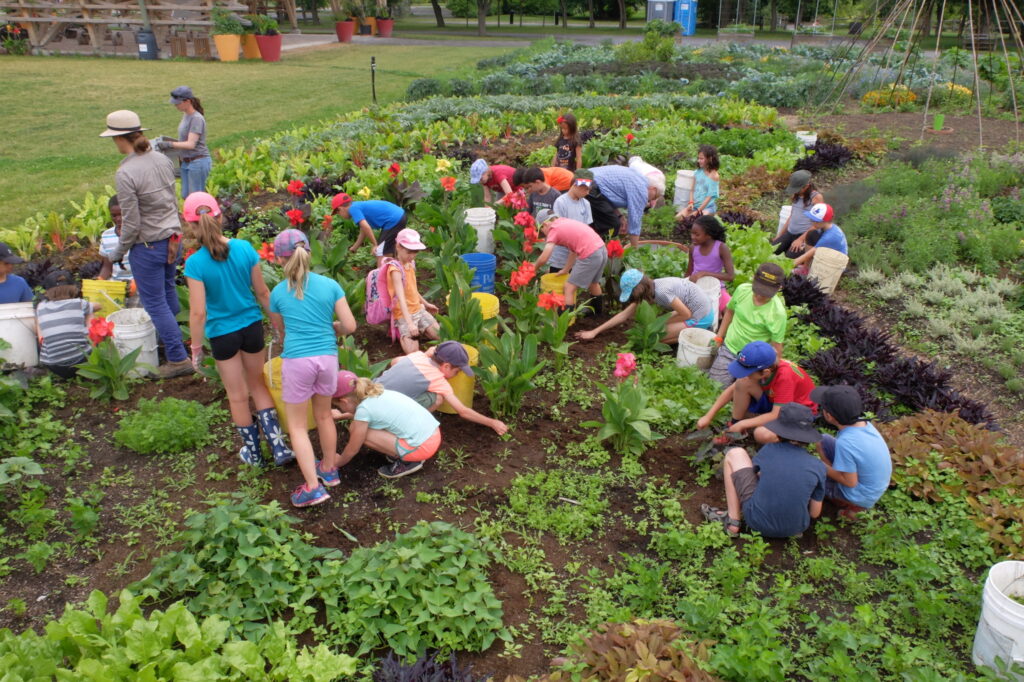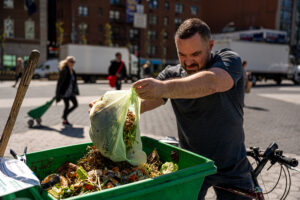School gardens and kitchens could grow with Ontario’s proposed food literacy act

As some essential services like community gardens re-open and people start planting again, our connections to food are top of mind.
COVID-19 has shone light on many issues in our “just enough, just in time” food system. Stories about meat-packing workers and migrant labourers facing COVID-19 work hazards and other injustices have put a spotlight on the precarity of a globalized food system.
Some seed retailers have reported growing demand amid an apparent pandemic resurgence in gardening, while some local farms reported increased sales. Awareness of where our food comes from and all the issues this implies will be important for building a more resilient post-pandemic food system.
Food literacy includes knowing how to plan, select, prepare and eat healthy meals as well as being aware of and engaged in food systems. Ontario’s Food Literacy for Students Act (Bill 216) aims to make food literacy mandatory for all Ontario students in grades 1-12 to “ensure that students are given opportunities to grow food, prepare food and learn about local foods.”
First of its kind in Canada
Bill 216 is the first of its kind in Canada. The private member bill was proposed in October 2020 and has passed its first and second reading, but has not yet gone to committee. Canada currently lags behind some other countries in teaching and funding food literacy. Japan, for example, has a food education law that emphasizes food and cooking skills.
Many young people today are graduating high school without essential food skills to cook or grow food, and lack knowledge about our food systems, where food comes from, how it was produced and the broader systems that move and regulate it. This is because this type of food-related education is not mandatory.
A lack of food literacy or skills can lead people to be more reliant on highly processed ready-made foods which, if consumed regularly, can increase risk of developing chronic disease. But food skills alone can’t compensate for having
inadequate income or facing food insecurity due to constrained choices in the foods that are available where one lives.
Chronic disease is a burden on our health-care system. It costs Ontario $10.5 billion annually and disproportionately affects those facing health inequities, such as people with lower socio-economic status, Indigenous peoples, sexual and racial/ethnic minorities, immigrants and people living with physical or mental impairments.
Awareness of food systems and policies — sometimes known as agricultural literacy — is important for everyone since these systems and policies affect our environment, economy and the people working within them. These systems and policies also influence the foods that are produced or available to us locally, in turn affecting our health and cultural food practices.
As such, awareness and recognition of a diversity of cultures and food practices will be critical for food literacy in schools in order to decolonize food systems and related education. This is especially important in a country like Canada, where contemporary food policy and food experiences emerge from ongoing legacies of colonization (including residential schools) and Eurocentric and racist and exclusionary policies of immigration.
In Canada, policies that dictate how food is produced, distributed and consumed have adversely affected and under-valued Indigenous cultural practices, and cultural practices of communities deemed “other” by Eurocentric norms.
Educating students about food systems could help the next generation to envision and build a more equitable and resilient food systems and advocate for the foods and food justice issues relevant to diverse cultures and communities. Food literacy education could help empower students and communities to be engaged in policy decisions affecting food, choosing what they eat, how it is produced, processed and distributed — all of which affects community food security.
Kitchens and gardens
Learning through hands-on experiences, especially with food in kitchens and gardens, is a way for students to develop skills and solidify their knowledge.
This type of approach reinforces knowledge when learning about food and food systems. Learning hands-on skills in a kitchen has shown to improve one’s confidence in their ability to cook, which can increase the likelihood of cooking and preparing meals from scratch.
But schools often do not have infrastructure such as kitchens and gardens, and most teachers do not have the training to lead cooking and gardening lessons. Investment in kitchens and gardens by governments is essential to make hands-on food literacy education possible. In 2014, the United Kingdom committed the equivalent of more than $295 million for school kitchens and dining facilities.
In 2020, the Coalition for Healthy School Food called on the federal government for a one-time investment of $200 million in a dedicated school food fund for infrastructure and equipment, such as kitchens and cafeterias, greenhouses, appliances and tools, and pilot projects.
This could enhance existing programs and expand programming across the country. In the meantime, some innovative projects with local chefs and restaurants provide some evidence that this type of hands on learning is possible.
Connections to a national school food program
Many of the infrastructural changes that would result from Bill 216 could also support a national school food program. They could also help to teach about the new Canadian Food Guide, Indigenous and diverse cultural food practices since food programs would benefit from kitchen and garden facilities.
Earlier this year in February, the federal Minister of Agriculture launched an advisory council for Canada’s food policy. The council first met in early March, and soon we should hear how it will advise on implementing the four priority action areas the federal government announced in the 2019 budget: these areas include investing “in projects that increase access to food, with the potential to provide social, health, environmental and economic benefits,” and engaging with “provinces, territories and key stakeholder groups to work toward the creation of a national school food program.” Another priority is addressing Indigenous food insecurity and providing support for “strong Indigenous food systems.” These priorities can and need to be reflected in food literacy and school food initiatives.
However, the program is yet to be funded. Canadians who signed a House of Commons e-petition 1957 presented to the House in May 2019 calling for a national school food program are eager to hear more about next steps and how this could dovetail with Bill 216.
Given that food literacy is an essential knowledge and skill set, a food literacy act in Ontario and other provinces is long overdue. The proposed act adds to the potential right now to make comprehensive and integrated school food programs possible.
What are we waiting for?![]()
This article was originally posted on School gardens and kitchens could grow with Ontario’s proposed food literacy act







